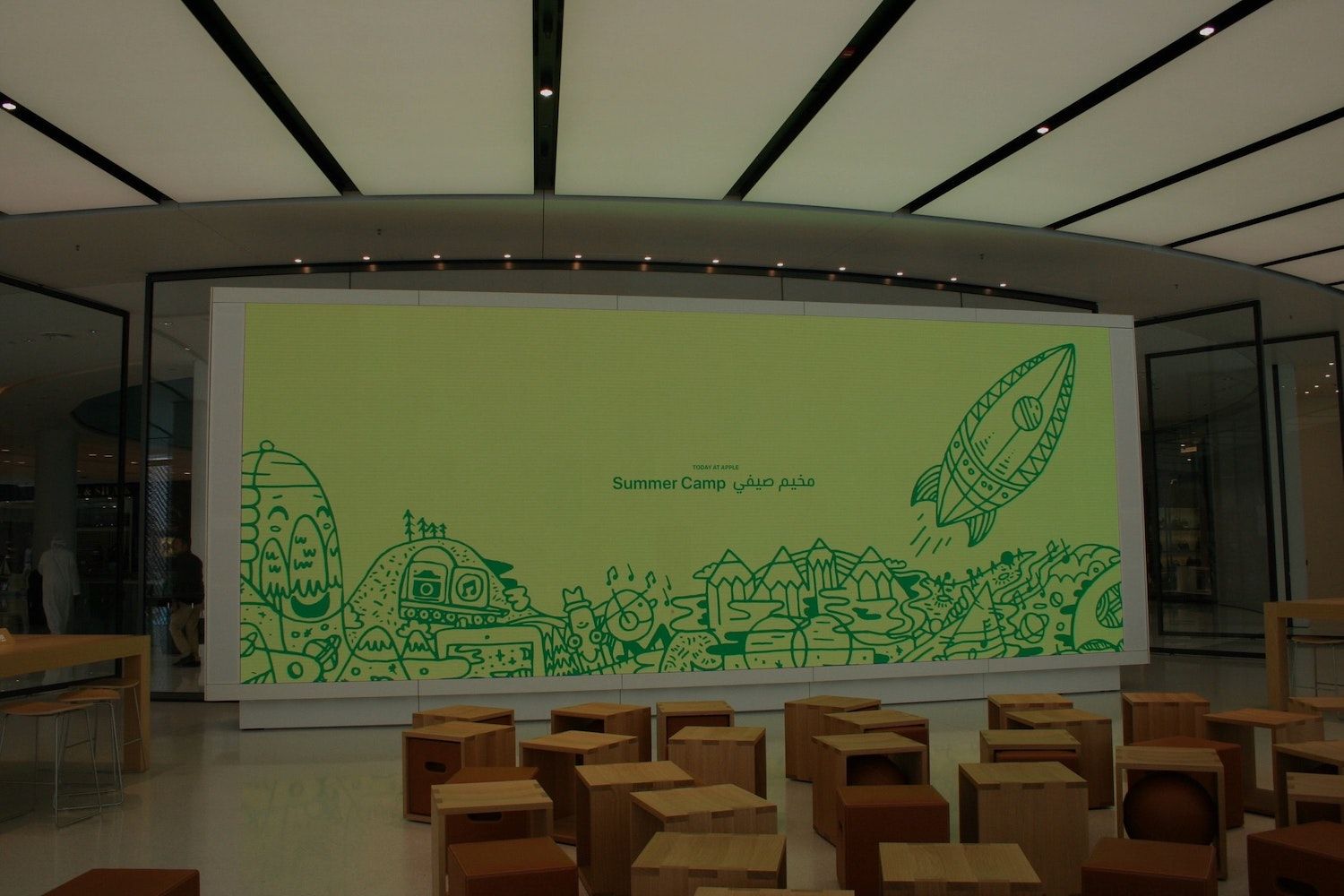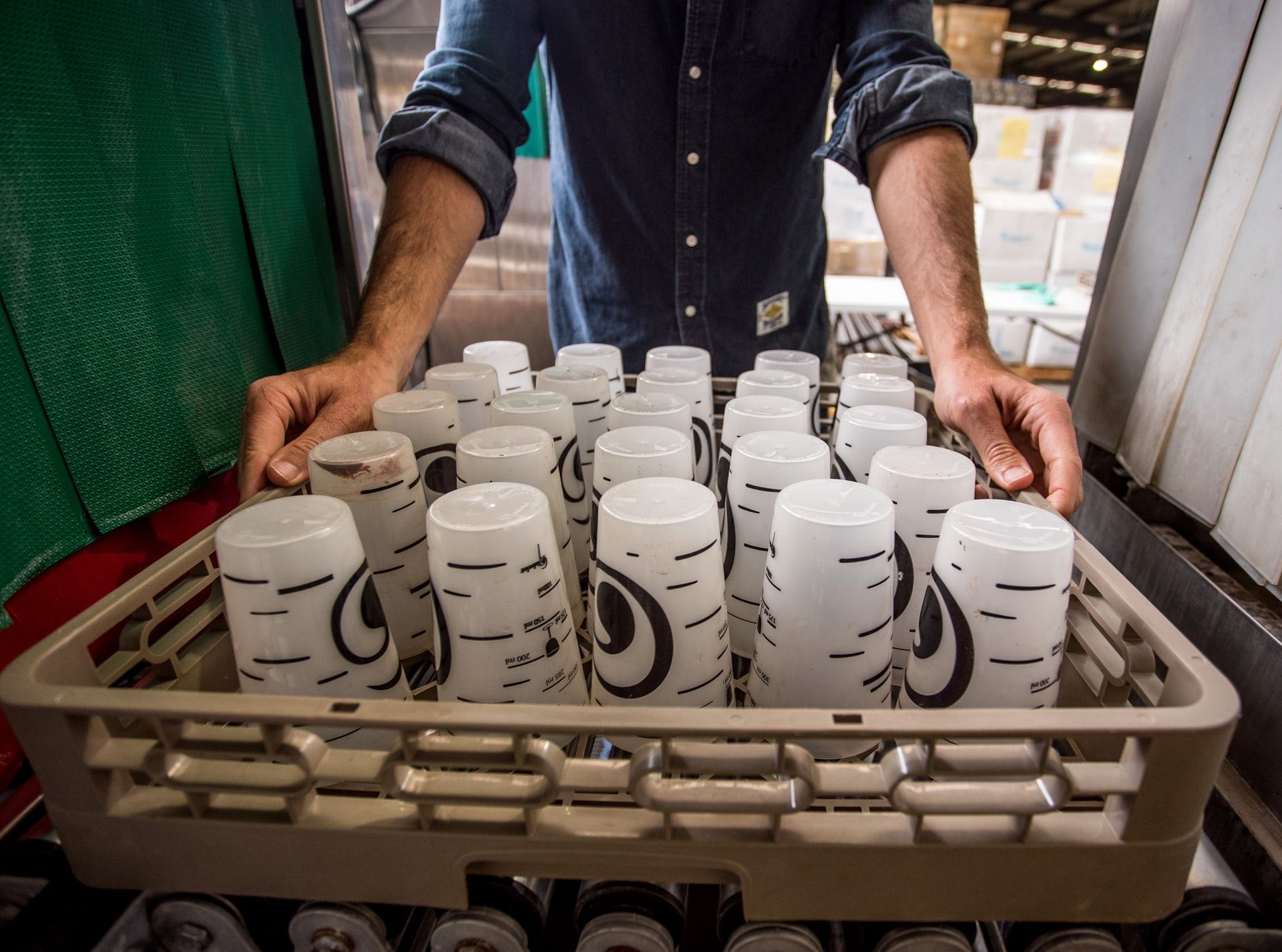At Hire Space, we see thousands of events come to fruition each year, some intimate, some large-scale, and some that take up no space at all. But regardless of size, all events have an environmental footprint, and in order to help us, our clients and venues make better decisions for the planet, we took the chance to scrub up on our understanding of the impact of events by attending the sustainability workshops run by Reset Connect and delivered by David Humphreys of Green Circle Solutions.
We took away some valuable insights about improving our own event, EventLAB, which you can read more about in our blog on building sustainability into your events. We highly recommend checking out the workshops yourself, but in the meantime we thought we'd share a little of what we learnt about identifying and reducing the main contributors to your event footprint - after all, if we're going to change the industry, we've got to do it together.
The key challenge: identifying areas of focus
Between 2019 and 2020, the number of respondents citing sustainability as a "key focus" for their events rose by 58%, according to Eventbrite's UK Event Trends Report. But for many in the industry, it can be difficult to know where to start with making changes to reduce their own organisation’s impact. The goal of the workshop series, which has a new intake each month, is to give attendees the tools to visualise their footprint and identify areas that can be actively addressed.
The attendees on our particular series represented a wide cross-section of the industry, from event organisers to venues, marketers, and advertising specialists. This meant that attendees got a broader understanding of where the industry can look to cut down on its emissions, and learnt how to work together across the event landscape to achieve these reductions - after all, collaboration is critical to sustainability.

Understanding event impact streams
The separate areas, from energy to waste, that contribute to your event or organisational footprint, are known as impact streams. In the first session, we discussed which areas were likely to be significant contributors to our organisation’s footprint, and to the industry as a whole. Answers included energy use at both events and in the office, staff and delegate travel, materials used at events, exhibitor travel and stand production, technology and live-streaming, data exchange, food and drink, waste, and event giveaways.
Broadly, most of these can be grouped into the following categories:
- Energy and utilities
- Transportation and logistics
- Materials and Consumables
Bundled together, these areas may seem too overwhelming to address at once, but taking them all into account is important to setting the context and establishing what the main contributors are. After all, if you only have the resources to shrink one stream, you want to make sure you're focusing on slowing down a river rather than a trickle! For many of us, this is a new and hazy area, so fortunately the workshops offered practical guidance and exercises on identifying key areas to focus on.
Calculating your event footprint
The first step to calculating your event impact is gathering the data you have on the event. The more information you can collate, the more accurately you'll be able to tell which areas contribute most to your footprint. Once you have numbers on paper, you'll be able to input them into a calculator template to get their weighting and draw actionable insights.
Collecting the data
You can start collecting data before your event, or do it retrospectively. However, you'll want to keep in mind that you may need to survey attendees to find out key information like how they travelled to and from the venue, and where they stayed. You'll also need to communicate to your suppliers and venue that you're collecting this information, so that they can keep track of areas like packaging and transport at their end - check out our tips on communicating sustainable objectives to suppliers for how to convey this.
The key areas to focus on collecting data on are:
- Energy and utilities - this should be the kW of electricity used per hour by the venue during your event, and, if applicable, the water and gas usage. Discuss this with your contact at the venue before the event, if possible. If your event involves a virtual element, you may also want to factor in the emissions related to live-streaming.
- Transportation and logistics - delegate, staff, venue staff, and exhibitor travel and accommodation. This should detail the method of transport and number of miles travelled in total (it's fine to make assumptions and go with averages), as well as the number of people staying in hotels (again, estimates are better than nothing!).
- Materials and consumables - this includes any branding, graphics, and brochures you produced for the event, as well as materials for exhibition stands, one-off props, and lanyards. You'll need a rough estimate of the weight of the materials, and what they're composed of. This section also covers everything which isn't reusable, for instance food waste, packaging, and excess giveaway items.
Turning the data into insights
Turning the data into actionable insights involves inputting the numbers into a carbon calculator which converts the data into tonnes of CO2 equivalent. You can find examples of carbon calculators online, but not all of them are specific to, or suitable for, the events industry. This online carbon calculator from myclimate.org provides an introductory template for those interested in getting an overview of their event emissions. You can also use the standard conversion factors set by the UK government as a tool to do your own calculations.
Using a more in-depth carbon calculator created by Green Circle Solutions, who delivered the workshops, we inputted the information we'd collected about our events and organisations, and the calculator created charts to represent the proportion of emissions from each impact stream. This allowed us to compare the different components of our footprint and understand which areas were the most significant contributors to our event emissions.
For our event, energy, supplier travel, and materials were key areas the calculations highlighted, which gives us plenty of scope to set targets for the next time round. To read about what we found and what steps we've decided to take as a result of the workshops, check out our article on building sustainability into EventLAB.

The key takeaways
As event organisers, we have an obligation (and an opportunity) to cut the footprint associated with our events. Once we understand which of our impact streams contributes most significantly to our overall impact, we'll be better equipped to tackle them and reduce our event footprints. Here's what we took from the workshops:
- Setting targets is a useful way to make sure sustainability is a key factor, rather than an afterthought at your events. Doing some analysis of your impact streams makes it easier to identify which area will have the most impact, and once you've identified which impact stream(s) to focus on, you'll be able to set objectives to cut down in that area and chart your reductions year-on-year, or event-to-event.
- Once you have specific objectives in place, it's important to communicate these to colleagues, stakeholders, and suppliers to make sure you get everyone on board with your targets. For a more in-depth guide to communicating your goals and strategy, check out our article on setting sustainable objectives, with guidance from isla on making sure that all of your suppliers are aware of and aligned with your targets.
- It's often better to focus on one area that has a big impact on your emissions, rather than trying to cut down on everything at once. This allows you to really hone in on one specific area and make significant reductions to it - it also means the messaging's clear and you can set tangible targets that everyone's on board with. If waste is a large proportion of your event footprint, you might choose to halve the amount of waste produced from one event to the next, or over a given time period; if it's often transport that swells your footprint, taking this into account when choosing a venue could have significant results.
If you're interested in learning more about how to measure and reduce your emissions, Reset Connect's workshop series have start dates each month, and consist of 3 sessions on the context and how-tos of tracking your impact. Find out more below, or check out our article on putting the theory into practice with a round-up of the sustainability lessons from our event, EventLAB, for more detail.




